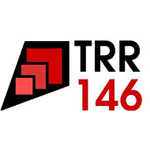
Seminar über Theorie der kondensierten Materie / TRR146 Seminar
May 4, 2012 at
1 p.m.
in
Lorentz-Raum (Staudinger Weg 7, 05-127)
F. Schmid
friederike.schmid@uni-mainz.de
P. Virnau
virnau@uni-mainz.de
L. Stelzl
lstelzl@uni-mainz.de
Note: Sondertermin: 13:00 Uhr, Lorentz-Raum
Mechanisms of Molecular Recognition and Self-Assembly at the Nanoscale: Computation Meets Experiment
Hendrik Heinz (Department of Polymer Engineering, University of Akron, Ohio, USA)
Control over size and shape of metal nanocrystals during synthesis has shown a strong correlation with the occurrence of soft epitaxial interactions between polarizable atoms (O, N, C) in peptide backbones and crystallographic facets on the metal nanocrystals, as demonstrated for nanostructures of Au, Pd, and Pt.
Understanding the interfacial forces enables a range of potential applications such as specific molecular recognition in sensors, catalytic functionality in coupling reactions, and conductive metal nanostructures. Recognition of peptides on oxidic nanoparticle surfaces such as silica involves a different binding mechanism − ion pairing and hydrogen bonds − that is also tractable by constant pH molecular dynamics simulation. We will explain the wide range of possible surface structures of silica nanoparticles and the binding mechanism of peptides by experiment and simulation (surface acidity, zeta potential, binding energy, etc), including support from mutant peptides. In the last part of the talk, we share features of the interface force field for the thermodynamically consistent simulation of inorganic-organic interfaces.